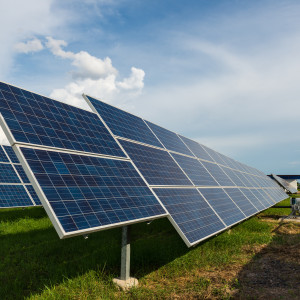Editor’s Note: For an alternative viewpoint, please see: Point: Solar Power Presents Significant Environmental Problems
There is no such thing as a perfect energy source. Unless you’re watching a sci-fi Hollywood movie. That being said, while solar and other renewable energies are not perfect, when compared to traditional energy sources they are safe, clean, inexhaustible, naturally abundant and the best way forward.
The benefits of solar energy are extensive. In short, solar energy is not only sustainable, it is renewable; this means that we will never run out of it.
The use of solar over traditional energy sources also curbs greenhouse gas emissions and reduces our collective dependence on fossil fuels. It’s gaining popularity both commercially and in residential use, therefore the best plan forward is to continue to invest and improve this natural clean energy source.
According to the Energy Information Administration, solar energy will grow faster than any other renewable source, averaging an annual growth rate of 11.7 percent through 2035.
While there have been some unwanted environmental effects, the important thing is that we learn the lessons from these mistakes and work continuously to improve how we plan and build this 21st-century renewable infrastructure. One way the industry is doing this is by working with experts, such as those from the Bureau of Land Management’s Western Solar Program, to understand the potential effects and plan accordingly so that we can limit the impact on natural resources.
There are countless examples of solar companies taking the right steps to ensure that solar development causes minimal effects to the natural environment. As environmental lawyer and author Philip Warburg points out, projects like the California Valley Solar Ranch worked with teams of experts to relocate sensitive species during the construction of the ranch and then reintroduce them afterward with migratory corridors and additional land mapped out to allow for the least amount of environmental impact.
Other large-scale solar projects are taking place on top of large commercial buildings and airports. Last week Minnesota’s largest solar power generator was turned on at the Minneapolis-St. Paul International Airport. The 3 million-watt system is expected to supply 20 percent of the electricity used in the airport terminal, and to cut an estimated 7,000 tons of carbon emissions per year. While the initial investment is expensive, this new solar generator is estimated to save $10 million over 30 years.
It’s important to understand that every action causes a reaction. Our agricultural economy requires huge amounts of water, fuel, fertilizers and pesticides. Does that mean we should stop growing crops?
The truth is we live in a chaotic society. One town builds a dam to utilize the water to improve farming, harness the energy to create power, and improve their communities. That decision will no doubt cause a domino effect, which causes another area downstream to suffer.
While there are complications to consider while installing the infrastructure to allow solar energy to thrive, when are there not? And what is our alternative? Does it mean we should continue to rely on oil, coal, natural gas and other energy sources that are limited, dangerous, and adding more toil to our already threatened environment?
We need to continue to invest in solar and other renewable resources so we can create a future for our children where energy will be naturally abundant, without the wars on resources that we have witnessed for centuries fighting over the earth’s declining natural resources.

